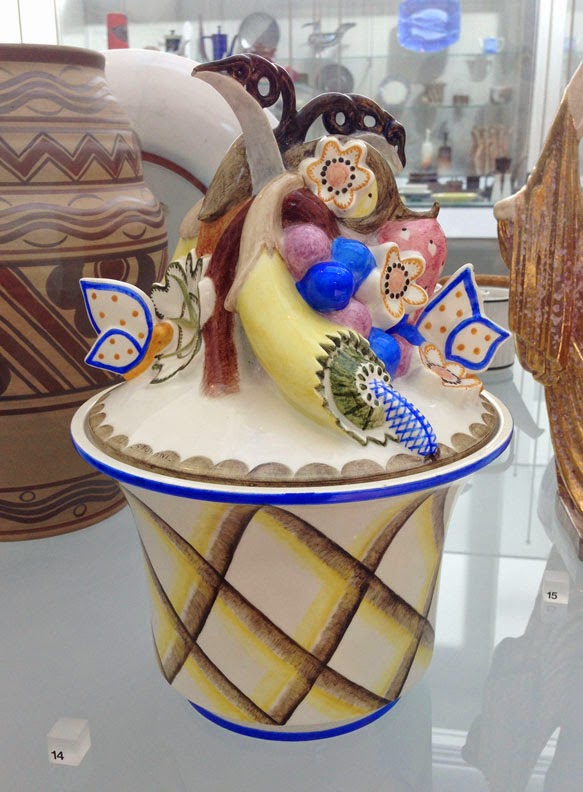Mario Sturani (designer)
Jar
circa 1931
This personal photograph does not do justice to the true colours of this earthenware jar. Amid the collection of ceramic artefacts found in this particular vitrine of the V&A (London), Sturani’s design literally ‘pops’ to the eye: from its surroundings, the jar’s bright paints appear to suck dry its peers’ murky browns and greys of any warm colours they may initially have, almost acting like a visually aggressive bully. But viewed on its own, as at first any form of art respectfully should be, Sturani’s jar boasts of a character rightfully fit for its time. Its elements echo the idiosyncratic qualities of Italy’s late Art Déco period, drawing together a bit of its neighbouring countries’ own styles (such as those of Switzerland, Austria and even Holland) and joining them with its own stylistic voice. This voice may be seen in the overall loosely-jumbled assemblage of decorative elements, giving the jar a rather elegantly ‘messy’ piled-up look, while the decorative elements themselves are Italy’s resulting interpretations of, for example, Switzerland’s folkloric marriage of colour and form; Austria’s graphic vernacular of shape; and early Netherlandish forms of tin-glazed earthenware tiles.
It is true that some may consider Sturani’s design as little more than a mere mélange of others’ work, but this judgement does not necessarily make him unoriginal as an artist. For his time, Sturani donated to his country his individual take on current artistic values, all the while appropriately paying homage in his designs to contemporary artistic forerunners. It was simply from the recent past that he chose to carve for himself a more defined future.
